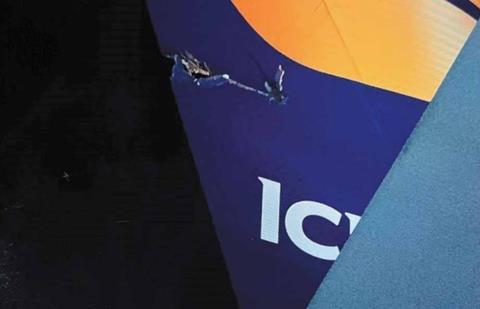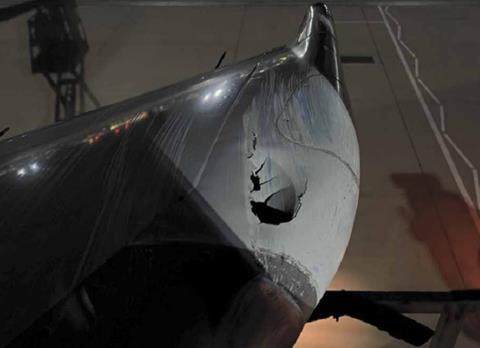UK investigators have determined that an Icelandair Boeing 757-200 crew did not inform London Heathrow ground control that the aircraft was not fully parked, before it was struck by a taxiing Korean Air Boeing 777-300ER.
The 757 had arrived at parking stand 241 in darkness – but good visibility – on 28 September last year.
But as the captain turned the aircraft onto the stand centreline, he observed that the visual docking-guidance system was not activated, and stopped the 757 about 20m from its final parking position.
“As the flight crew expected the guidance to be activated imminently, and had informed the handling agent, they did not inform the [air traffic] ground controller that they were not fully parked,” says the UK Air Accidents Investigation Branch.
The 777 had been travelling along taxiway L to runway 27R for departure and, although its pilots saw the 757 and thought it was protruding from the stand, the captain believed there was no conflict because he did not see an anti-collision beacon – although it was actually on – and had not been notified of conflict by air traffic control.

As the 777 continued to taxi, its left wing-tip struck the 757’s vertical fin, cutting through the rudder. The 777’s upper wing surface was also punctured.
Investigators found the 757 had been stationary for nearly 6min before the collision, and cockpit-voice recordings from the jet did not reveal any attempt to contact the ground frequency – or discuss such contact – until after the accident.
Over a 16min period, 8min either side of the collision, five other aircraft had reported being unable to park as a result of there being no guidance at the stand. But these were all reported to air traffic control, and no other incidents occurred.
Lack of stand guidance is “currently a persistent problem” at Heathrow, the airport’s operator and air traffic control service informed the inquiry. Ground staff shortages contributed to the absence of available guidance for the 757.
The stand could not be seen from the Heathrow control tower and ground radar did not show the 757 after it turned onto the stand.


Investigators state that Heathrow’s aeronautical publication instructs pilots to remain on the taxiway centreline, and inform air traffic control, if parking guidance has not been switched on.
But the 757’s captain said he normally initiated a turn onto the stand before checking for guidance, and was unaware that this could cause a problem. He attributed the decision not to inform controllers to ground-frequency congestion, but the inquiry believes there were “sufficient gaps” to make the call – and points out that there was no discussion of making a call on the cockpit recording.
“There are different rules and procedures in airports around the world and it can be challenging for pilots to read all the guidance and remember all the rules at each airport,” the inquiry acknowledges.


























